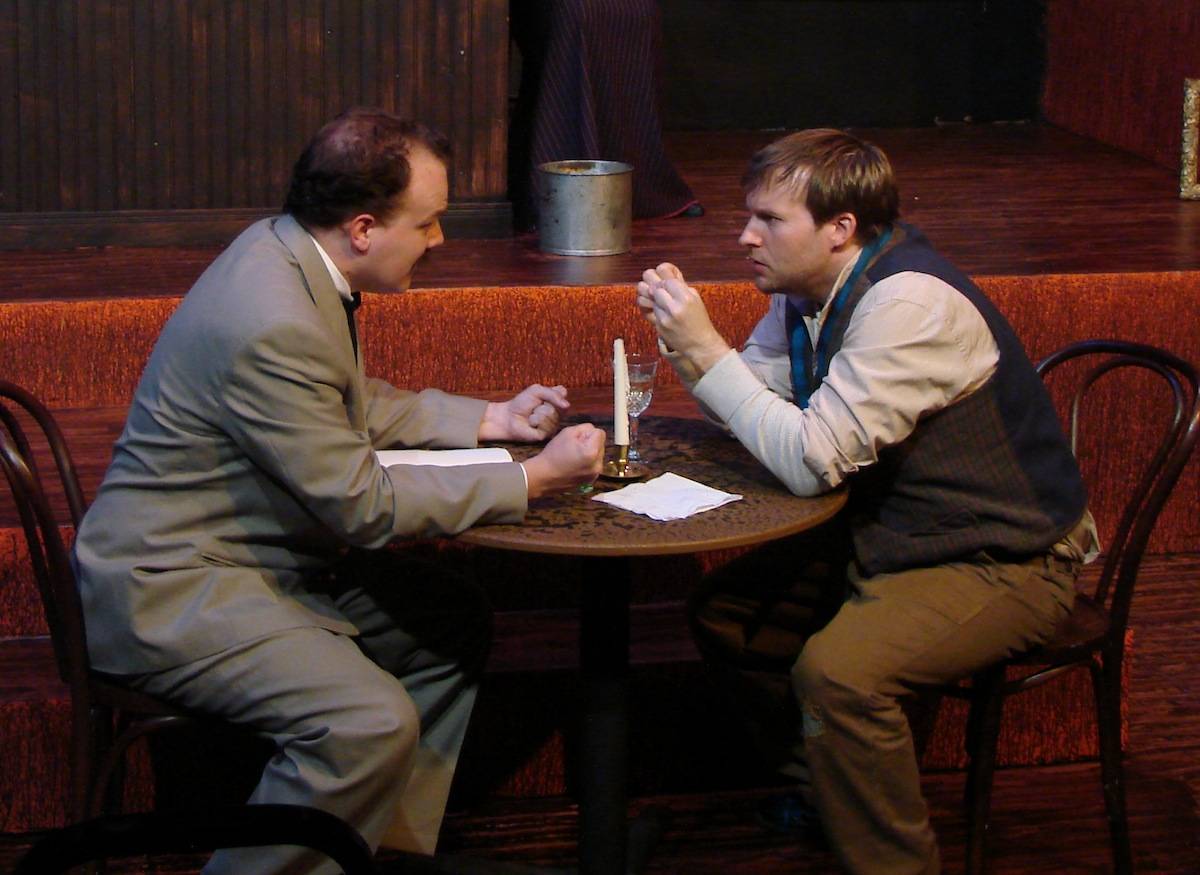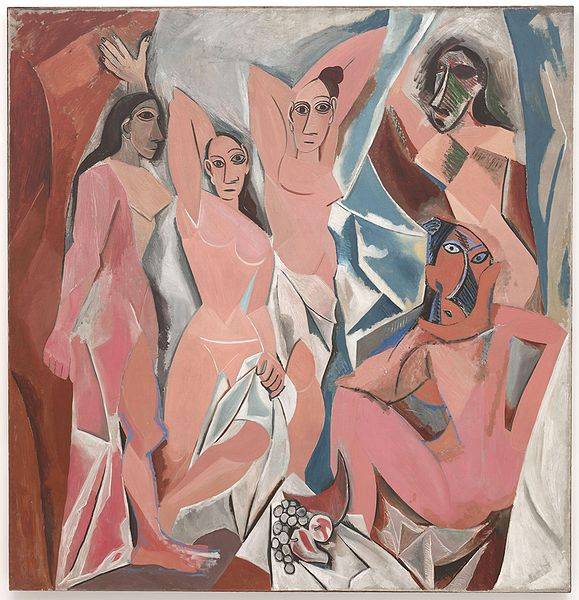Station Theatre’s staging of Steve Martin’s Picasso at the Lapin Agile seems particularly apropos for this moment, and even though it isn’t Paris, I’d say this city too. Picasso is a postmodern farce that simultaneously accepts and rebels against its self-imposed constraints. Take Einstein, Picasso, and a mysterious third panel in the triptych, throw them into a bar in Paris before either of them change the world, throw in some sex, an overactive bladder, and a bunch of comedy, and there you have the piece.
It’s also far less pretentious than I just made it sound by using the word triptych. Honestly. It’s more geeky than pretentious, I’d say. Example, “Come on, Picasso. What’s wrong, Blue Boy?”

Mike Prosise and Mathew Green, playing Einstein and Picasso. Photo Credit: Jesse Folk
This a play that wonders, did the revolutionary minds of expression, those who set historical trends in motion for the past hundred years, did they muse about their worth, about whether or not they were revolutionaries, about who they would inspire some day? It’s a play that attempts to at once exploit the auras we allow “great men” while it strips them away. Things are always changing of course, but we know so little about the direction things will take without the advantage of hindsight. This is a play about pursuing inspiration and inquiry without accepting posterity as a given.
And it’s funny as hell.
 Ably directed, the show is natural, makes you feel like you’re hanging out with some sharp people you just met dropping into a new town, as long as you set foot in the right watering-hole. Definitely an event that entertains even better than it massages your brain-meats.
Ably directed, the show is natural, makes you feel like you’re hanging out with some sharp people you just met dropping into a new town, as long as you set foot in the right watering-hole. Definitely an event that entertains even better than it massages your brain-meats.
I left a dangling question in my preview: would Dana Major’s replica of Pablo Picasso’s Les Demoiselles d’Avignon, an integral and transformative set piece for the play, meld well with, what looked to be, a very promising set design?
Totally.
Not only does the set bring out the perfect ambiance for a show about sitting around and drinking with the arrogant and the humble, the soon-to-be and never-to-be famous, but the replica provides a rustic charm, with Picasso’s brown border intermingling well with the faux-wood-paneling all around the bar. Both Major and designer Wes Huff deserve major props for their efforts. It all works well with sitting in a small, intimate space, to make you believe you’re in the thing, a place that’s real and humble — yet, that which is transformative lurks just behind the window-curtains or in your head.
The play tries to move toward an ending that is trepidatious, yet optimistic. Maybe the casual milieu is supposed to just clash with the suddenly surreal moment, but the quick, dramatic lighting shifts in the final moments of the play didn’t work for me — they jerked me into the conclusion rather forcefully where the rest of the play allowed me to ease in quite comfortably. It felt off-balance for a dramatic conclusion that didn’t let me into something transcendental, but rather a finale that’s a bit stark and confusing.
Entertainment-wise, though, and inspirationally, it’s hard to pass up this air-tight ensemble cast that refuses to let anybody take the show and run away with it, instead, volleying hilarious and interesting dialogue with great timing and precision.
This is quality theatre, piping-hot. I suggest you come get yourself a slice before it’s all eaten up.
And afterwards, perform your own version the show yourself over at the Iron Post, write doodles and formulae on cocktail napkins and make the world wish that, a hundred years later, there existed an FLV of the chance encounter of geniuses in Champaign-Urbana when the twenty-first century came to be.
It’s not that far-fetched.








